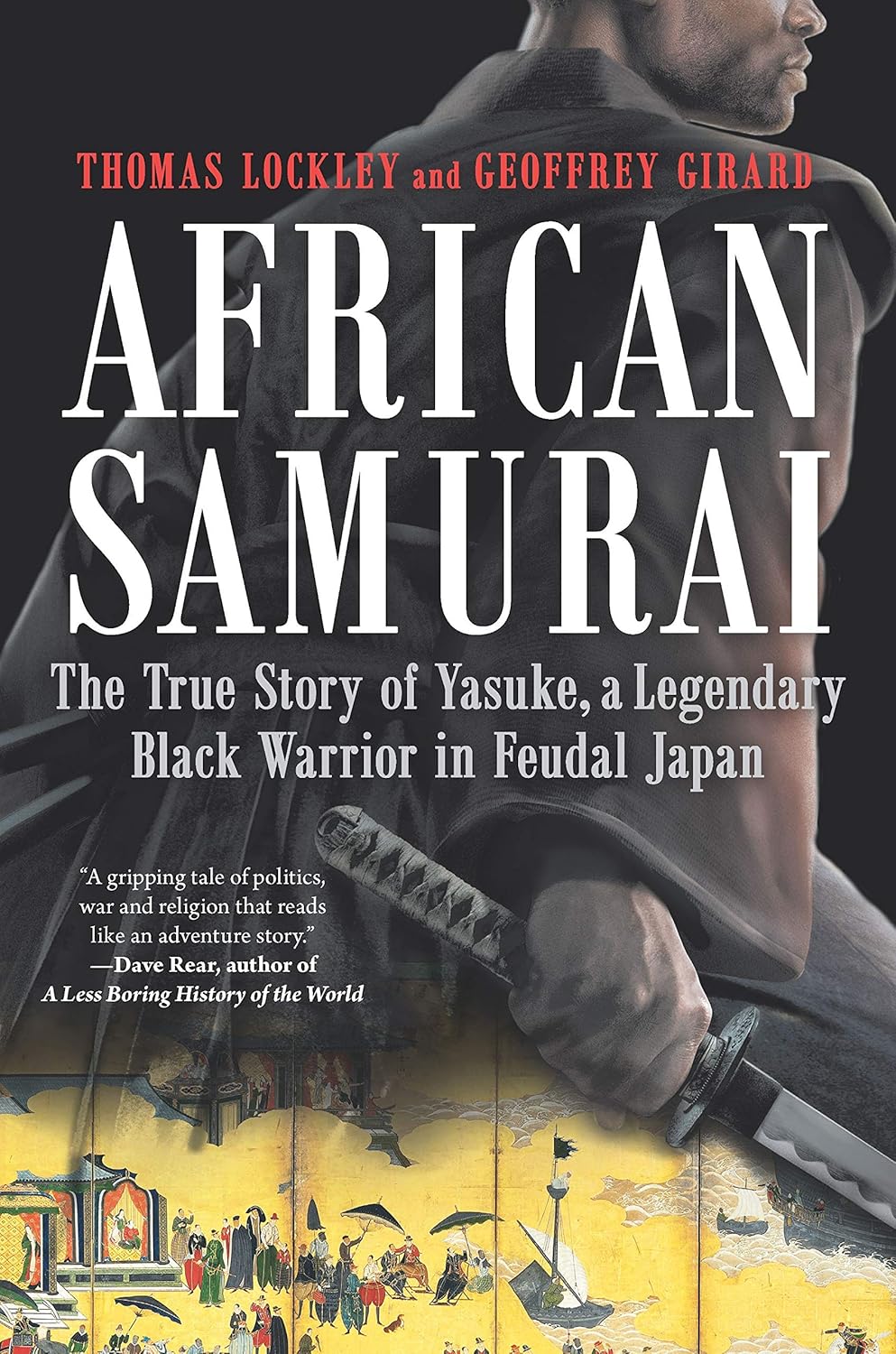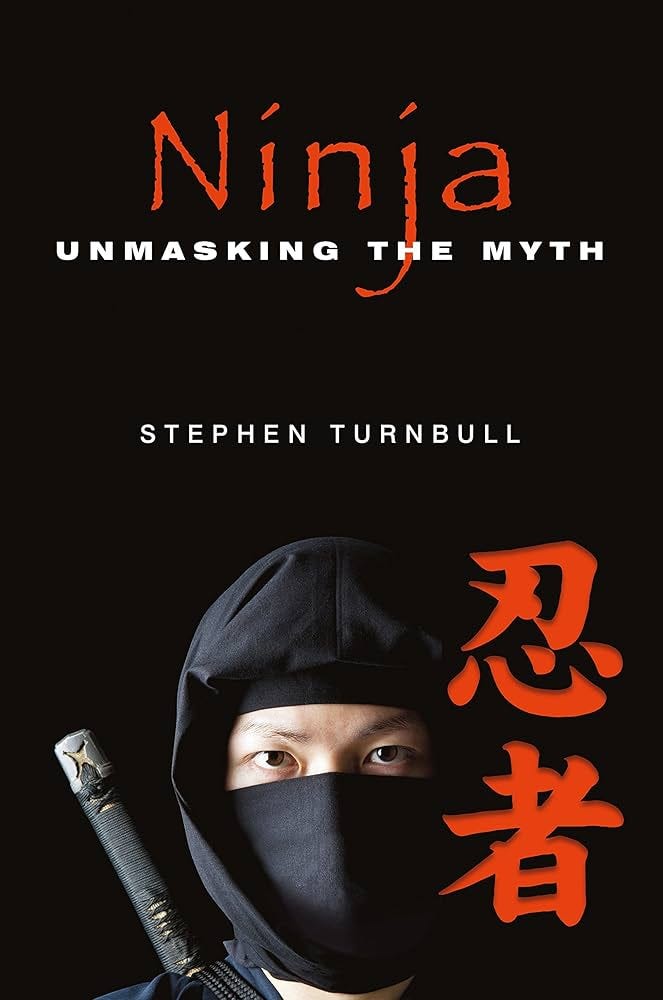Talk to Your Kids About Ninja, or Somebody Else Will
Dignified silence: not a great communication strategy!

One of the curious things about the field of ‘ninja’ studies is how massive the imbalance is between the popular literature on the topic and the scholarly literature. The Center for Ninja Studies at Mie University in Japan has, handily enough, compiled a PDF bibliography of books published on the topic in non-Japanese languages to 2012. They’re casting a very wide net, because quite a few of the publications listed are novels or discussions of fictional ‘ninja’ like Naruto or Joe Musashi from Revenge of Shinobi, while others are manuals for learning the techniques of the modern martial art of ninjutsu. (And a few titles appear barely tethered to reality, like Shadow Warrior: Secrets of Invisibility, Mind Reading, and Thought Control. No, seriously. Take a look for yourself).
Even if you exclude fictional or how-to publications, though, it’s clear that there are several dozen books available in English that make a case for the historical ‘ninja’ to general readers - Andrew Adam’s classic Ninja: The Invisible Assassins (1970) is on the first page of the Mie PDF, for instance. As against this, in the realm of peer-reviewed scholarship over the same period (1970 to 2020), as far as I am aware the sum total of publications on ‘ninja’ in English would be zero books, one chapter in an edited volume, and two journal articles.1
I can’t think of any other topic in Japan Studies that has such a yawning gap between pop and academic coverage.
Something’s going on here.
Most Academics are Only Dimly Aware of the ‘Ninja’ Stuff
My own experience suggests that most professional academics are aware that writers such as Stephen Turnbull, Anthony Cummins, and co have put out a lot of pop-facing stuff about ‘ninja’ and samurai warfare. That’s usually about as far as academic awareness goes, though; talking to Japan Studies scholars at conferences and the like, I’ve found that very few have actually read any specific work by (say) Turnbull. In March 2024, at the Association of Asian Studies annual meeting, I happened to be in conversation with a senior historian of Japan at a major US research university (whom I won’t identify here). When Turnbull came up, the scholar in question gave an eye-roll but then admitted to never having read any of his work.
Your average academic is, however, likely to come across pop-facing ‘ninja’ work if they’re teaching any kind of survey course of Japanese history or literature, especially if they assign a research paper for the class. Publications by Cummins, Turnbull, and the like are highly visible and easily located through Google Books, so they’re very likely to show up in the bibliography of a student paper and will often be cited as sources. Fellow ‘ninja’ enthusiast Peter Huston, over at his Substack, has a hilarious and painfully accurate account of what tends to happen next:
“No! No!” cries the professor. “Please don’t write about ninja,” using the proper Japanese plural form of the term. “People simply don’t know enough about them. The information is not there. Your paper will be no good.”
“But how can you say that?” cries the student. “I told you, I have already read 14 different books on ninjas. They are full of exciting stuff on each and every page, and they were all really, really cool! I have been reading about ninjas, since I was in eighth grade.”
“But those books are no good!” cries the professor. “They are full of speculation and misinformation.”
“Have you read them?” screams the student.
“No, of course not,” cries the professor. “I am a busy man with important things to do and my career depends on getting published in scholarly journals, plus a full life outside of work. I don’t have time to read that type of silly books.”
Pretty much nails it. I had more or less this exact conversation in Fall 2012 with a student in my Japanese Civilization course about using Turnbull as a source.
Most Academics are Aware that the ‘Ninja’ Stuff is Crap
So it’s basically an open secret among professional academics in Japan Studies at north American universities that the ‘ninja’ stuff is both widespread and not very good. It is, though, incredibly difficult to find any public acknowledgment of this state of affairs. The best I can do is a discussion from 2005 - almost twenty years ago now! - on H-Japan, an email listserv for academic historians working on Japan. The discussion is brief but interesting, so I recommend you go and read it for yourself (the navigation interface is a bit funky - click on “next message” and “by thread” to follow the conversation as it unfolds). The main points, though, are as follows:
pop ‘ninja’ history is “junk”
the subject is hard to study because of the lack of historical sources
‘ninja’ might have been “terrorists” or some other kind of outsider group
someone should really do something about this.2
Karl Friday’s comment about ‘ninja’ history being “junk” is absolutely on the money, as you’ll know if you’ve been reading literally anything I’ve written in the last six months. But viewed from the point of view of communication strategy, it’s easy to see how a savvy popular writer could turn this approach back on itself. Look at these pompous academics in their ivory towers, too stuck-up to deal with topics people actually want to read about! And can you believe the stones on this guy, just casually dismissing the whole field? He doesn’t even explain why! Who does he think he is?
To be crystal clear, I don’t disagree with Friday’s assessment in any way. The point I’m making is that the approach professional academics tend to take to the ‘ninja’ literature - ignore it, hope that your students don’t find it, and if they do tell them it’s crap without explaining why - isn’t working very well. In fact, it amounts to abandoning the field of battle completely.
Lockley and Turnbull: The Sloppy Leading the Sloppy
I think that this state of affairs is a problem on general principle. I don’t like the idea that readers with a genuine interest in Japan should be presented with reams and reams of unreliable information without some challenge. The fact that the H-Japan discussion linked above happened almost twenty years ago, though, suggests that a lot of academics don’t see this as a particularly big problem. Or, to put it more accurately and charitably toward my fellow scholars, they probably do recognize that it’s a problem, but are also aware that the structural and career incentives in Japan Studies don’t encourage doing anything about it.
The thing is, though, that unreliable information is a bit like an unexploded bomb: you never quite know where or when it might surface and blow someone up. This is readily apparent in the case of Thomas Lockley and Geoffrey Girard’s African Samurai, published by Hanover Square Press in 2019.
If you’re remotely connected to Japan Studies or video game culture, you’ll know that Lockley’s book found itself at the center of a firestorm in the summer of 2024. The main trigger was the inclusion of Yasuke, a man of African origin who came to Japan in the late 1500s and entered the service of the warlord Oda Nobunaga, as a lead character in the video game Assassin’s Creed: Shadows. Yasuke’s inclusion upset a certain subset of very online people, and since Lockley’s book is the most high-profile discussion of Yasuke, they turned some of their ire on him.
I don’t want to discuss the whole mess in detail here - I’ll leave that for another post. Suffice it to say that nobody deserves the kind of abuse Lockley got, period; and yet, Lockley’s book itself is, without question, seriously flawed as a work of history. Limiting myself here to only the most relevant example, the book is extremely credulous on the topic of the ‘ninja.’ It gives the reader the impression that attacks by ‘ninja’ were a known and constant risk in medieval Japan, and contains multiple examples of ‘ninja’ activity that almost certainly never happened.3 Some of this ‘ninja’ activity we’ve covered in these pages quite recently, like the Uesugi Kenshin ‘toilet ninja’ story or Manabe Rokurō’s attempt to kill Oda Nobunaga.4
So the fact that Lockley’s “true story” contains several things that definitely or probably didn’t happen turned out to be perfect ammunition for those who didn’t like the idea of a Black man as leading character in a video game set in Japan. It opens the door to the “What else is he getting wrong?” line of attack, and then tees up the idea that Yasuke being a “samurai” - or maybe even existing at all - is simply a woke myth propagated by all those lying Marxist academics.5
African Samurai doesn’t have detailed source citations, so it can be difficult to figure out where Lockley is getting his information or the evidence for his claims. Surveying Lockley’s bibliography, though, I feel fairly confident that basically all of Lockley’s ‘ninja’ claims came from Stephen Turnbull’s 2003 book Ninja: AD 1460-1650, and to a much lesser extent from Turnbull’s 2017 Ninja: Unmasking the Myth. These two are the only sources I can see in African Samurai that mention the ‘ninja’ events, so I can’t see where else Lockley would have found them.
The Blame Game
Now, you could very well argue that Lockley should have been more careful in his research; after all, if Karl Friday knew in 2005 that the ‘ninja’ stuff was “junk” and I knew in 2012, then Lockley probably should have known too. That Lockley should have been more critical about his sources seems inarguable, not least because Turnbull’s 2017 Unmasking the Myth appears in African Samurai’s bibliography. Unmasking the Myth is Turnbull’s most recent book, in which he issues something of a mea culpa for his previous work and tries to set the record straight with some better and more up-to-date scholarship on the topic. My strong impression is that Lockley didn’t read Unmasking the Myth very carefully, or if he did, he failed to grasp one of the central points the book was making.
But at the same time, I can kind of see how Lockley could have missed some of the warning signs. Turnbull’s mea culpa in Unmasking the Myth is, it seems to me, very careful in what it does and does not say; while Turnbull does essentially disavow his 1991 Secret Warrior Cult, he says nothing about Ninja: AD 1460-1650, which is the work that Lockley actually read.6 This is odd, because in my judgment Turnbull’s AD 1460-1650 is significantly worse than Secret Warrior Cult. It’s much less critical about its subject matter and less transparent about its sources (though it sold a lot better than the first book - go figure). If you add in the fact that Unmasking the Myth still contains the Manabe Rokurō story with no indication that it’s probably fiction, I can indeed understand how Lockley could have read Unmasking the Myth and come away with the impression that he was on solid ground using the stories from Turnbull’s 2003 work.
Obviously, I have no certain way of knowing how African Samurai came together other than what I can deduce from the book itself. But it seems fairly clear that Lockley was using Turnbull as a source for a fair bit of factual information, even though he probably shouldn’t have been. It’s an open question as to who is ultimately to blame: the guy who put the unreliable info out there in the first place, or the guy who missed all the red flags?
Silence: Maybe Not So Golden?
What we can say, though, is that the prevailing academic reluctance to engage with pop-facing stuff isn’t doing anybody any favors, Lockley least of all, and isn’t going to prevent similar cases from happening again. To give credit where it’s due, African Samurai’s problems were noted fairly soon after its release, though not by professional academics. British author and critic Jonathan Clements wrote (accurately) of the book in May 2019 that it was “a true story. But a lot of it isn’t true,” while Colorado-based ninjutsu instructor Don Roley published a long rant against the book on his blog later the same year.
Roley’s comments are particularly interesting, since he appears to be on the more conservative side of the political spectrum. From his point of view in 2019, the reason no professional academic had criticized African Samurai is that:
[f]ew people that work in academics, a field especially vulnerable to the politically correct attack culture, will be willing to risk their careers by setting the record straight.
I think Roley is wrong on this point, though. The reason for the academic silence on African Samurai wasn’t that everyone was scared of losing their careers for challenging “woke” orthodoxy.
It’s much simpler: nobody read it.
If you doubt this, I invite you to look through the mostly-scholarly Pre-Modern Japan Studies (PMJS) discussion of Yasuke, which kicked off in July 2024. You’ll see that I’m in there as a contributor, but you’ll also see that with a couple of exceptions (me among them), a healthy number of participants in the discussion admit that they hadn’t read African Samurai, or in some cases even heard of it.
Let me state again that I’m not blind to the professional and institutional structures that disincentivize academic publication on the ‘ninja’ - in fact, I’ll talk about them in the next post. But equally, I’d argue that academia’s strong tendency to ignore this topic and hope it goes away has resulted in some outcomes that aren’t good for anybody, no matter what form your interest in Japan takes.
So that, as we look forward into 2025, is why I’m doing what I’m doing.
The first article is Turnbull, “The Ninja: An Invented Tradition” Journal of Global Initiatives: Policy, Pedagogy, Perspective Vol. 9 No. 1 (2015), some of which was recycled in Turnbull’s 2017 Unmasking the Myth. The second is Polina Serebriakova and Daniel Orbach, “Irregular Warfare in Late Medieval Japan: Towards a Historical Understanding of the “Ninja” Journal of Military History no. 84 (October 2020). The latter is a worthwhile article, one I plan to discuss in depth at some point, but because the journal is paywalled a lot of people won’t be able to read it. This is how a lot of academic publishing is, so I don’t intend this as a criticism of Orbach and Serebriakova, but the difficulties in accessing peer-reviewed scholarship are an obstacle that needs to be reckoned with if academics are going to reach a big enough audience to make a dent in the topic.
The book chapter is Pierre Souyri, “Autonomy and War in the Sixteenth-Century Iga Region and the Birth of the Ninja Phenomenon” in John A. Ferejohn, and Frances McCall Rosenbluth, eds., War and State Building in Medieval Japan (Stanford, CA: Stanford University Press, 2010). I can’t recommend this last one because Souyri doesn’t cite his sources properly (what is it with ‘ninja’ writing that causes this to happen?), so it’s hard to tell what the precise evidence for his claims is.
My comments, since we’re here: 1) agreed 2) yes, but that’s because the ‘ninja’ is a literary construct, not a historical one 3) historical shinobi were not a cohesive enough group to make statements like this 4) agreed.
Lockley and Girard, African Samurai, p. 92.
African Samurai p. 163 (Kenshin) and p. 224 (Manabe Rokurō).
For the record, Yasuke pretty definitely existed, and the argument that “he shouldn’t be called a samurai” is pointless. ‘Samurai’ wasn’t a clearly defined class in late medieval Japan, so you could argue that point about almost anyone. Modern use of the term ‘warrior’ or ‘samurai’ to refer to people in the medieval period is so loose that in a pop context I think Lockley’s use of the term is justifiable, especially as the evidence shows that Yasuke was in service to a major warrior house.
Turnbull, Unmasking the Myth, p. ix. The same applies in Turnbull’s 2015 article cited in footnote. 1 above; a reader could easily be forgiven for thinking that the problems with Turnbull’s work began and ended with his 1991 Secret Warrior Cult.






I just want to say your Substack is fascinating, and about a topic I had no idea I was interested in. I came across it, oddly enough because of a running joke I started in a War and Peace read-along (this novel has everything they said, does it have ninjas I said). Keep up the good fight against the ninja-industrial complex!